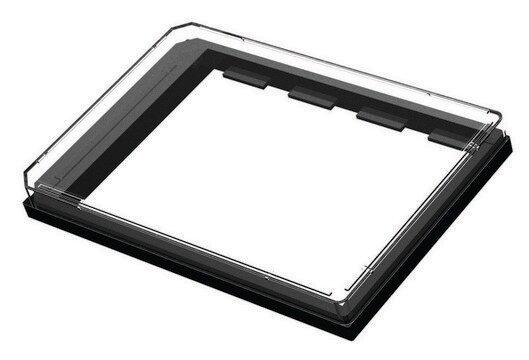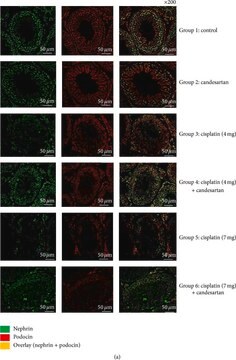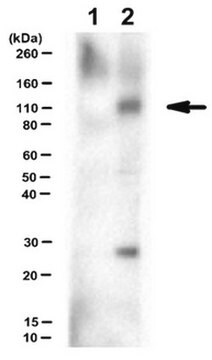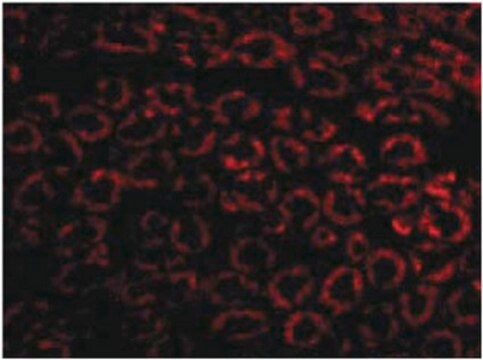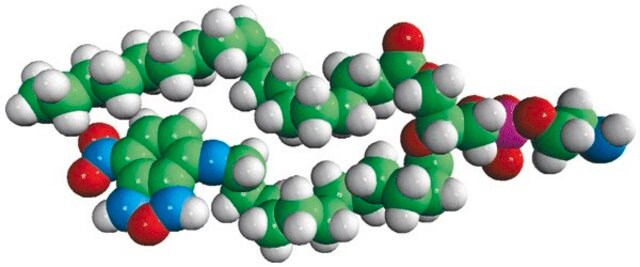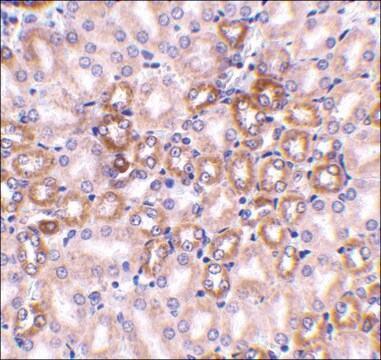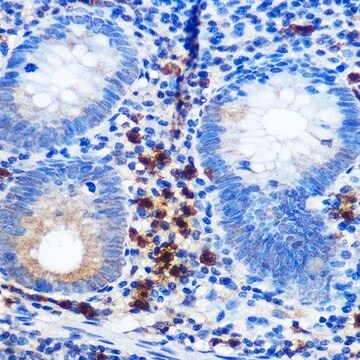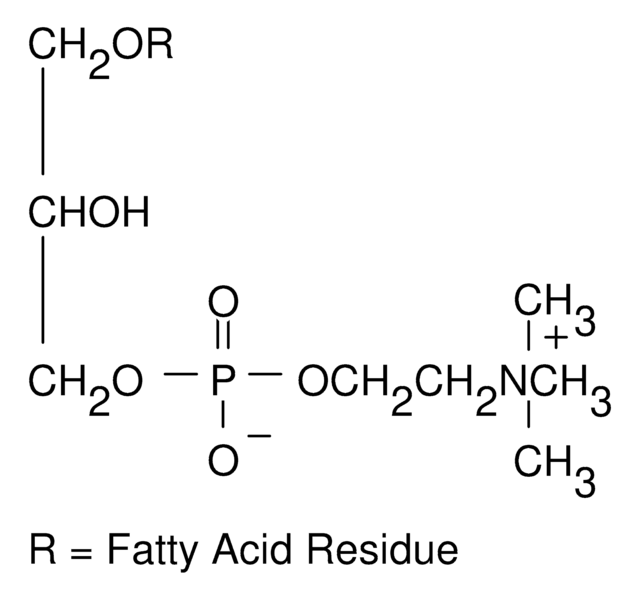ABS1511
Anti-Neph1 Antibody, cytoplasmic domain
from rabbit, purified by affinity chromatography
Synonyme(s) :
Kin of IRRE-like protein 1, Kin of irregular chiasm-like protein 1, Nephrin-like protein 1, Neph1, cytoplasmic domain
About This Item
Produits recommandés
Source biologique
rabbit
Niveau de qualité
Forme d'anticorps
affinity isolated antibody
Type de produit anticorps
primary antibodies
Clone
polyclonal
Produit purifié par
affinity chromatography
Espèces réactives
mouse, rat, human
Technique(s)
electron microscopy: suitable
immunocytochemistry: suitable
immunofluorescence: suitable
immunoprecipitation (IP): suitable
western blot: suitable
Numéro d'accès NCBI
Numéro d'accès UniProt
Conditions d'expédition
wet ice
Modification post-traductionnelle de la cible
unmodified
Informations sur le gène
human ... KIRREL1(55243)
Description générale
Spécificité
Immunogène
Application
Signaling
Signaling Neuroscience
Western Blotting Analysis: A representative lot detected ischemia-induced Neph1 membrane-to-cytosol translocation in human podocytes (Wagner, M.C., et al. (2008). J Biol Chem. 283(51):35579-35589).
Western Blotting Analysis: A representative lot detected Neph1 in mouse glomeruli & cultured human podocytes (Arif, E., et al. (2011). Mol Cell Biol. 31(10):2134-2150).
Immunoprecipitation Analysis: A representative lot immunoprecipitated Neph1 from rat glomerular and human podocyte cell lysates (Arif, E., et al. (2011). Mol Cell Biol. 31(10):2134-2150).
Immunofluorescence Analysis: A representative lot detected Neph1 using both paraffin-embedded and frozen rat kidney sections (Arif, E., et al. (2011). Mol Cell Biol. 31(10):2134-2150; Barletta, G.M., et al. (2003). J Biol Chem. 278(21):19266-19271).
Electron Microscopy Analysis: A representative lot detected Neph1 in frozen rat kidney sections (Barletta, G.M., et al. (2003). J Biol Chem. 278(21):19266-19271).
Immunocytochemistry Analysis: A representative lot detected Neph1 in cultured human podocytes (Arif, E., et al. (2014). J Biol Chem. 289(14):9502-9518; Arif, E., et al. (2011). Mol Cell Biol. 31(10):2134-2150; Wagner, M.C., et al. (2008). J Biol Chem. 283(51):35579-35589).
Qualité
Western Blotting Analysis: A 1:1,000 dilution of this antibody detected Neph1 in rat kidney tissue lysate.
Description de la cible
Forme physique
Stockage et stabilité
Handling Recommendations: Upon receipt and prior to removing the cap, centrifuge the vial and gently mix the solution. Aliquot into microcentrifuge tubes and store at -20°C. Avoid repeated freeze/thaw cycles, which may damage IgG and affect product performance.
Note: Variability in freezer temperatures below -20°C may cause glycerol containing solutions to become frozen during storage.
Autres remarques
Clause de non-responsabilité
Vous ne trouvez pas le bon produit ?
Essayez notre Outil de sélection de produits.
Code de la classe de stockage
10 - Combustible liquids
Classe de danger pour l'eau (WGK)
WGK 3
Certificats d'analyse (COA)
Recherchez un Certificats d'analyse (COA) en saisissant le numéro de lot du produit. Les numéros de lot figurent sur l'étiquette du produit après les mots "Lot" ou "Batch".
Déjà en possession de ce produit ?
Retrouvez la documentation relative aux produits que vous avez récemment achetés dans la Bibliothèque de documents.
Notre équipe de scientifiques dispose d'une expérience dans tous les secteurs de la recherche, notamment en sciences de la vie, science des matériaux, synthèse chimique, chromatographie, analyse et dans de nombreux autres domaines..
Contacter notre Service technique